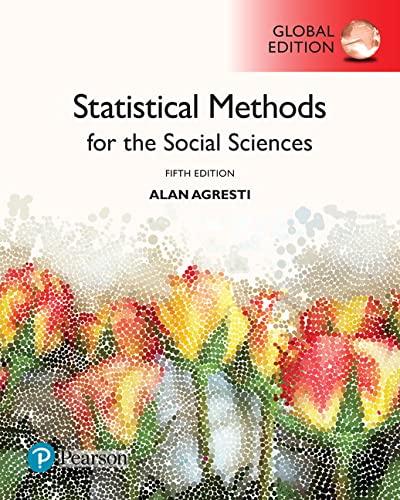15.9. Table 15.21 summarizes logistic regression results from a study8 of how family transitions relate to first
Question:
15.9. Table 15.21 summarizes logistic regression results from a study8 of how family transitions relate to first home purchase by young married households. The response variable is whether the subject owns a home (1 = yes, 0 = no). Explanatory variables include a categorical variable for marital status two years after the year of observation
(categories married, married with a working wife, single, with single the omitted category for the two dummy variables), a dummy variable for whether the family has more children aged 0–17 two years after the year of observation, and a dummy variable for whether the subject’s parents owned a home in the last year that the subject lived in the parental home.
TABLE 15.21 Variable Estimate Std. Error Intercept −2.870 —
Husband’s earnings ($10,000) 0.569 0.088 Wife’s earnings ($10,000) 0.306 0.140 Number of years married −0.039 0.042 Married in two years (1 = yes) 0.224 0.304 Working wife in two years (1 = yes) 0.373 0.283 Number of children 0.220 0.101 Additional child in two years (1 = yes) 0.271 0.140 Household head’s education (no. of years) −0.027 0.032 Parents’ home ownership (1 = yes) 0.387 0.176
(a) Which explanatory variable seems to have the greatest partial impact on owning a home?
(b) Describe the partial effect of each additional $10,000 increase in (i) husband’s income, (ii) wife’s income.
(c) To describe the effect of husband’s earnings, find the estimated probability of home ownership when wife’s earnings = $50,000, years married = 3, not married in two years, the wife is working in two years, number of children = 0, additional child in two years = 0, head’s education = 16 years, parents’ home ownership is no, when husband’s earnings equal (i) $20,000, (ii) $100,000.
Step by Step Answer:

Statistical Methods For The Social Sciences
ISBN: 9781292220314
5th Global Edition
Authors: Alan Agresti






